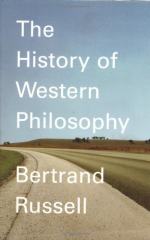|
This section contains 583 words (approx. 2 pages at 400 words per page) |

|
Book 2: Chapter 11, The Twelfth Century Summary and Analysis
The twelfth century involved the increasing conflict between empire and papacy, the development of the Lombard cities along with the crusades, and the growth of scholasticism. Its events provoked movements that occurred in the thirteenth century, when the Crusades ended.
Through the alliance with the Lombard cities the Pope revolted against the Emperor, while Pope Urban II initiated a series of Crusades that were continued by the popes that followed. Philosophy remained within the bounds of orthodoxy as it was practiced mainly by clerics. Despite that the Middle Ages were creative while North Italian cities prospered commercially. Urban II opposed lay investiture, encouraged free episcopal elections, and mostly agreed with appointments. He managed to excommunicate the French King Philip, who wanted divorce while allying with Conrad, son of Henry IV to invade North...
(read more from the Book 2: Chapter 11, The Twelfth Century Summary)
|
This section contains 583 words (approx. 2 pages at 400 words per page) |

|




